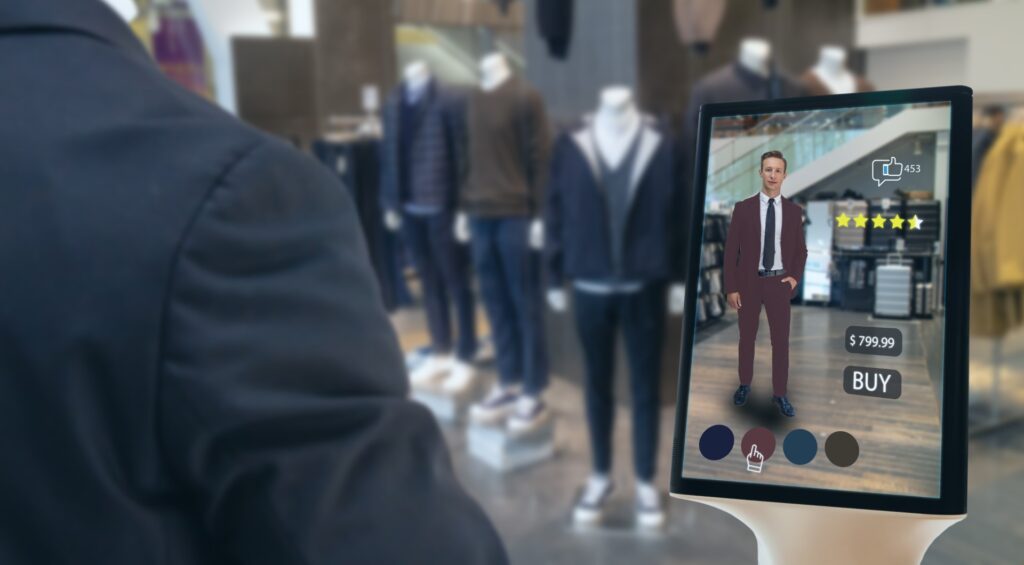Fashion and technology have long been intertwined. From the invention of the sewing machine to the rise of e-commerce, technology has played a major role in the evolution of fashion. In recent years, the intersection of fashion and technology has become even more prominent, with new innovations and advancements transforming the way we create, shop for, and wear fashion.
In this blog post, we’ll explore the exciting intersection of fashion and technology and discuss some of the most exciting innovations and trends in the industry.

Wearable Technology
One of the most exciting areas of innovation in the fashion industry is wearable technology. Wearable technology refers to smart clothing and accessories that incorporate technology to enhance the wearer’s experience. This can include anything from fitness trackers and smartwatches to clothing that monitors the wearer’s biometric data.
One of the most popular examples of wearable technology is the smartwatch. Smartwatches can be used for everything from fitness tracking and sleep monitoring to making phone calls and sending messages. Some smartwatches even incorporate fashion elements, with customizable watch faces and interchangeable straps.
Another example of wearable technology is smart clothing. Smart clothing can incorporate sensors and other technology to monitor the wearer’s movement, heart rate, and other biometric data. This data can then be used to provide feedback on exercise form or even adjust the temperature of the clothing to keep the wearer comfortable.
3D Printing
3D printing is another area of technology that has the potential to transform the fashion industry. 3D printing involves creating physical objects by printing layers of material on top of each other. In the fashion industry, 3D printing is being used to create everything from jewelry and accessories to clothing and even shoes.
One of the major advantages of 3D printing is the ability to create highly customized and unique pieces. 3D printing allows designers to create complex shapes and patterns that would be difficult or impossible to produce with traditional manufacturing methods.
Virtual Reality and Augmented Reality
Virtual reality (VR) and augmented reality (AR) are two other areas of technology that are having a major impact on the fashion industry. VR and AR technologies allow designers and retailers to create immersive shopping experiences that go beyond the traditional brick-and-mortar store or online shop.
With VR technology, shoppers can enter a virtual store and browse through a selection of clothing and accessories. They can see how the items look on a virtual model or even on themselves, thanks to the use of motion tracking technology. This allows shoppers to get a better sense of how the clothing will fit and look before making a purchase.
AR technology, on the other hand, allows shoppers to try on virtual clothing and accessories using their smartphone or tablet. AR technology can superimpose a virtual item onto a live camera feed, allowing shoppers to see how an item will look in real-time.

Sustainability and Eco-Friendly Fashion
Finally, technology is also being used to create more sustainable and eco-friendly fashion. From the use of recycled materials to the development of new materials made from natural sources, technology is helping designers and brands to reduce their environmental impact and create more sustainable products.
One example of eco-friendly fashion is the development of lab-grown materials. Companies are using biotechnology to create materials that are identical to traditional textiles but can be produced without the use of harmful chemicals or the need for large amounts of water.
Another example is the use of digital printing technology. Digital printing allows designers to print patterns and designs directly onto fabric, eliminating the need for excess fabric and reducing waste. This can also reduce the amount of water and energy needed to produce a garment.
In conclusion, the intersection of fashion and technology is an exciting and rapidly evolving area of innovation. From wearable technology to 3D printing, virtual reality and augmented reality, and eco-friendly fashion, technology is transforming the way we create, shop for, and wear fashion. As technology continues to advance, it’s likely that we’ll see even more exciting innovations and trends in the fashion industry.

